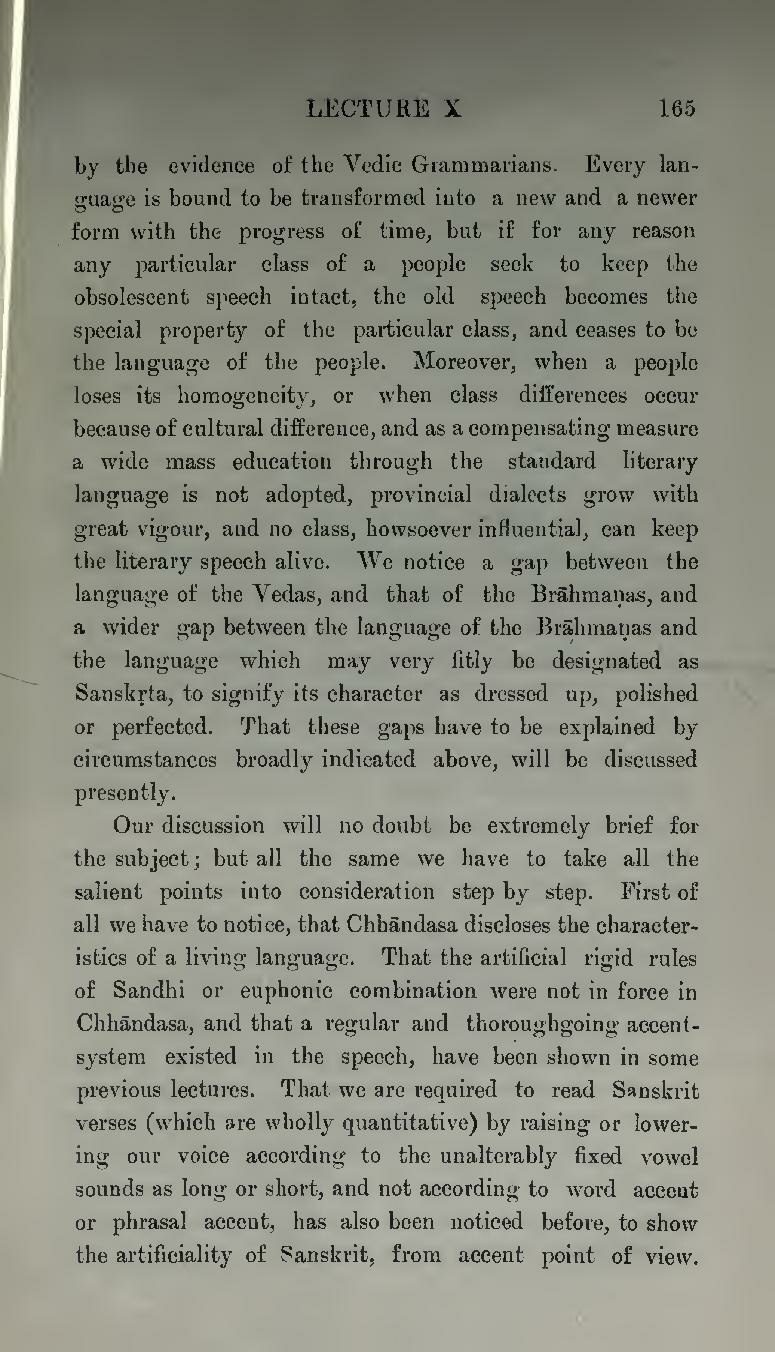by the evidence of the Vedic Grammarians. Every language is bound to be transformed into a new and a newer form with the progress of time, but if for any reason any particular class of a people seek to keep the obsolescent speech intact, the old speech becomes the special property of the particular class, and ceases to be the language of the people. Moreover, when a people loses its homogeneity, or when class differences occur because of cultural difference, and as a compensating measure a wide mass education through the standard literary language is not adopted, provincial dialects grow with great vigour, and no class, howsoever influential, can keep the literary speech alive. We notice a gap between the language of the Vedas, and that of the Brāhmaṇas, and a wider gap between the language of the Brāhmaṇas and the language which may very fitly be designated as Sanskṛta, to signify its character as dressed up, polished or perfected. That these gaps have to be explained by circumstances broadly indicated above, will be discussed presently.
Our discussion will no doubt be extremely brief for the subject; but all the same we have to take all the salient points into consideration step by step. First of all we have to notice, that Chhāndasa discloses the characteristics of a living language. That the artificial rigid rules of Sandhi or euphonic combination were not in force in Chhāndasa, and that a regular and thoroughgoing accent-system existed in the speech, have been shown in some previous lectures. That we are required to read Sanskrit verses (which are wholly quantitative) by raising or lowering our voice according to the unalterably fixed vowel sounds as long or short, and not according to word accent or phrasal accent, has also been noticed before, to show the artificiality of Sanskrit, from accent point of view.
